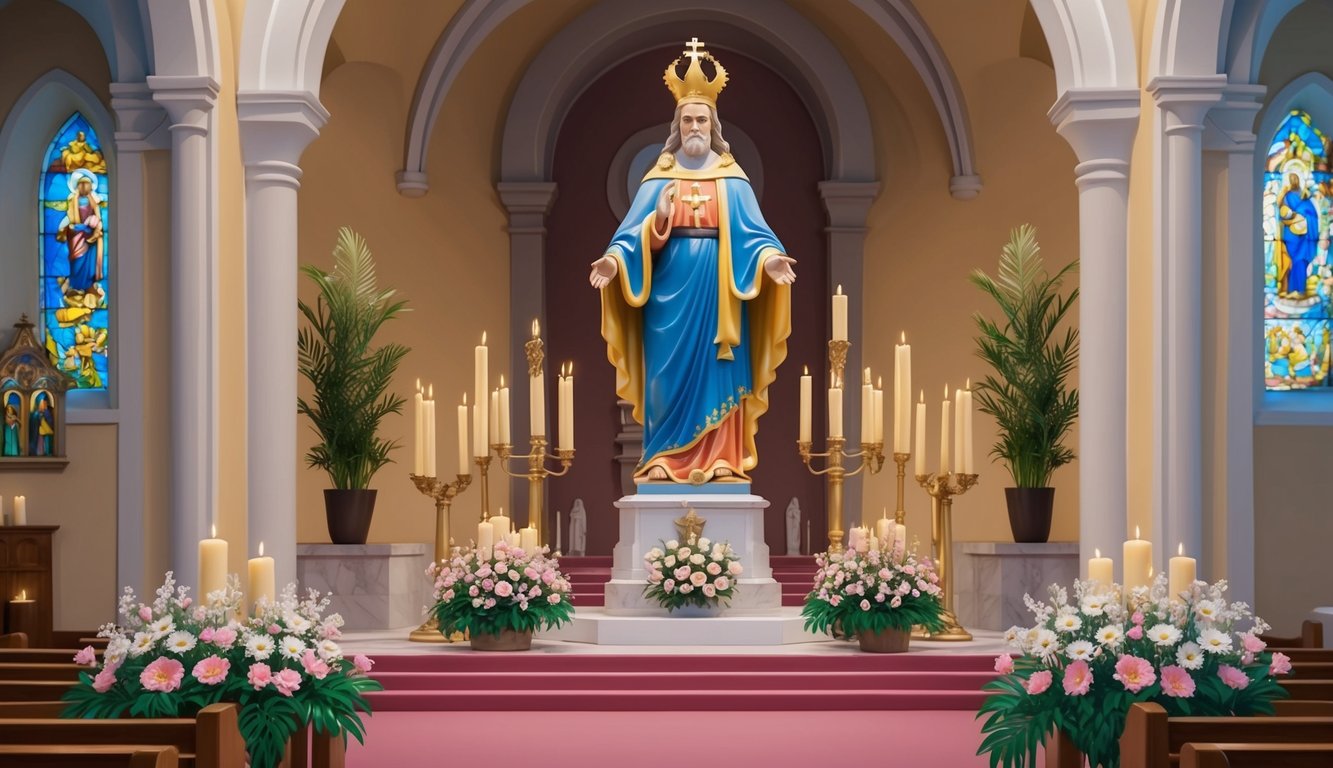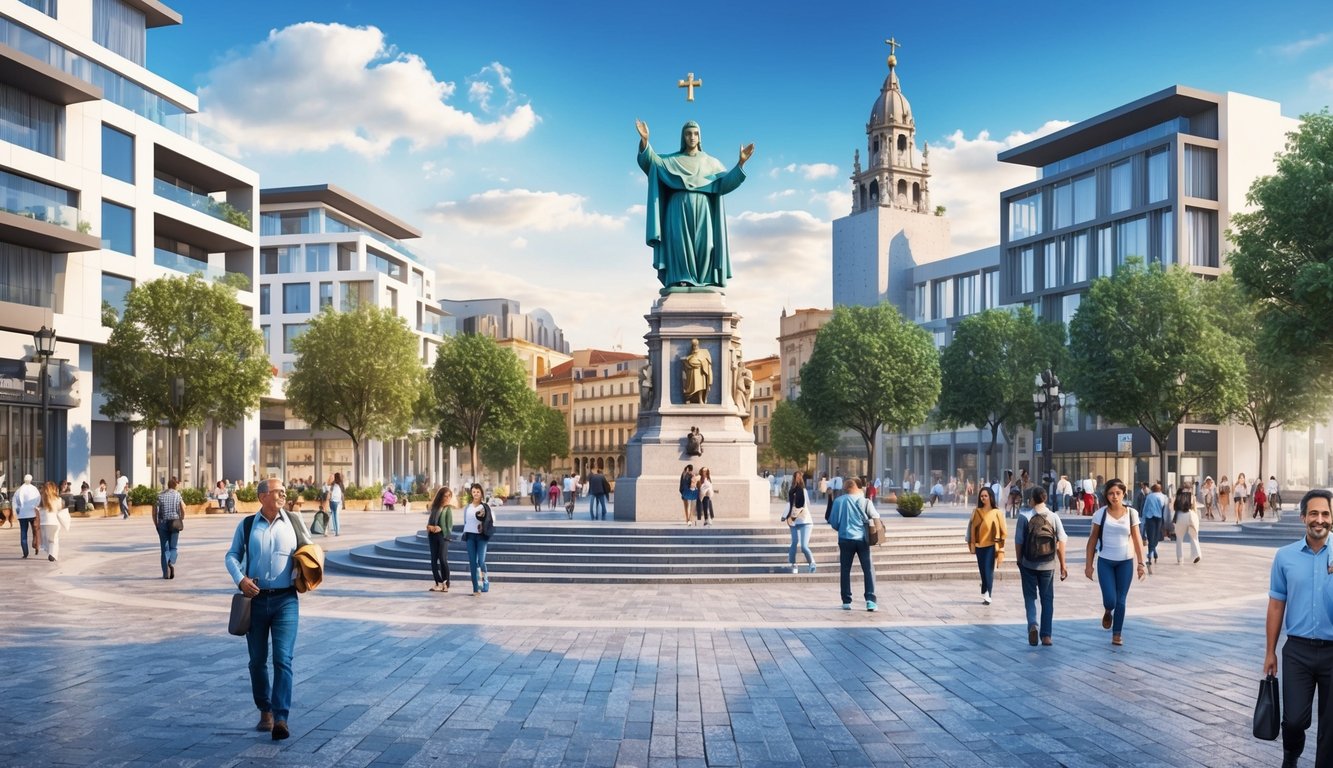Don’t Miss Out On This Unique Astrological Opportunity
Are you tired of spinning your wheels and getting nowhere? Simply put, you’re out of sync: you’re out of alignment with your astral configuration.
But: there’s a kind of map that can help you reclaim your alignment. Think of it as your own personal blueprint to success and happiness: a blueprint that will help you live your most amazing life.
Get started here.
Santo António, also known as Saint Anthony of Padua, holds a significant place in religious and cultural history.
The Catholic Church considers him one of its most popular saints, famous for his powerful preaching and deep theological knowledge.
His reputation as the patron saint of lost things and his canonization as a Doctor of the Church highlight his importance. Understanding Santo António’s influence can enrich your appreciation of both historical and contemporary religious practices.
Born in Lisbon, Portugal, Santo António later moved to Italy, where he became associated with Padua.
His striking miracles and contributions to the Franciscan Order established his enduring legacy.
You might find his story particularly compelling if you are interested in how historical figures influence today’s practices and traditions.
His impact extends beyond religious circles, influencing art, literature, and even modern community events.
His feast day on June 13 is celebrated with colorful traditions in Lisbon and around the world.
Knowing where to find these cultural celebrations can bring you closer to experiencing his legacy firsthand.
Key Takeaways
- Santo António is known for his theological contributions and miracles.
- His life started in Lisbon and ended in Padua, impacting both cultures.
- Celebrations on June 13 honor his legacy worldwide.
Life and Legacy of Santo António
Santo António, also known as St. Anthony of Padua, was a significant religious figure renowned for his deep commitment to faith and remarkable teachings.
This section provides an insight into his life’s journey and lasting legacy, emphasizing his transformation from a wealthy background to a humble friar, his mission, and influential sermons.
Early Life
You may find it interesting that Santo António was born Fernando Martins de Bulhões in Lisbon, Portugal, into a wealthy family.
This noble background offered him a comfortable start, providing him with a good education.
Despite his privileged upbringing, Fernando felt drawn to a life dedicated to religious teachings and understanding spiritual truths.
His early exposure to religious texts paved the way for his deep commitment to faith.
Lisbon, a vibrant city during his youth, influenced his perspectives and future endeavors.
By his late teens, Fernando was keen on delving into theological studies.
This yearning for a more profound spiritual experience eventually led him to make a significant life change.
Religious Transformation
Fernando’s entry into the religious world marked a crucial turning point.
He initially joined the Augustinian Order, which highlighted his commitment to faith.
However, his path took a transformative turn when he encountered the Franciscan Order.
Inspired by their simple, humble approach, he decided to join them.
This decision involved a dramatic change in identity and purpose, prompting him to take the name Anthony, symbolizing his new commitment.
As a Franciscan, Anthony focused deeply on religious teachings and servitude.
His transformation wasn’t just external; it reflected a profound internal change in his beliefs and lifestyle.
Mission and Teachings
Once Anthony’s new path was set, his mission centered around preaching and spreading theological knowledge. St. Anthony of Padua gained fame for his impactful sermons that resonated deeply with diverse audiences.
Known for addressing topics like humility and devotion, his teachings left a lasting impression on many.
Anthony’s preaching ability often drew large crowds in cities like Montpellier, Toulouse, and Forlì.
His commitment to clear and thoughtful explanation made his sermons noteworthy.
So compelling were his words that he earned the title Doctor of the Church, highlighting his theological proficiency.
Death and Canonization
Anthony’s life on earth concluded in Padua, Italy, where he passed away in 1231.
The news of his death spread rapidly, marking a sense of loss among his followers.
His life had been filled with devotion, miracles, and insightful teachings, earning him immense respect.
In recognition of his profound impact, Anthony was canonized by Pope Gregory IX just a year after his death.
Later, Pope Pius XII declared him a Doctor of the Church.
Today, the Basilica of St. Anthony in Padua stands as a testament to his enduring legacy, and he is venerated as a miracle worker and patron saint of lost items.
Cultural and Religious Significance

Saint Anthony of Padua, also known as San Antonio, holds a special place in both cultural and religious contexts.
His legacy is reflected in various aspects such as iconography, traditions, and prayers.
When exploring these elements, you’ll find a rich history that symbolizes devotion and faith.
Iconography and Symbolism
Saint Anthony is often depicted holding the Child Jesus, a lily, or a book.
The lily represents purity and peace, while the book symbolizes his status as a Doctor of the Church in the Roman Catholic tradition.
These items highlight different aspects of his life and teachings.
The Child Jesus in his arms emphasizes his deep spiritual connection with Christ.
This image fosters a sense of intimacy and comfort among devotees, reinforcing Anthony’s role as a protector and guide.
His iconography is a cornerstone for those seeking lost things or spiritual aid.
Festivities and Traditions
The Feast Day of Saint Anthony, celebrated on June 13th, is an important event in communities worldwide.
In places like Alfama, Lisbon, the day is marked by traditional foods like Caldo Verde and vibrant parades down the Avenida da Liberdade.
These celebrations bring people together in a festive spirit, highlighting community bonds.
These festivities also serve as a reminder of Anthony’s life and works.
Events often include public processions, music, and communal meals.
The celebration is both a religious and cultural occasion, providing an opportunity for people to connect with their heritage and spirituality.
Patronage and Prayers
Saint Anthony is renowned as the patron saint of lost things and marriage.
Many turn to him with prayers for assistance in finding lost items or for guidance in marital matters.
His connection to these areas makes him a frequent point of intercession for the faithful.
Prayer at Saint Anthony’s Tomb in Padua is another significant practice.
Many believe that visiting his tomb or attending a Day of Prayer for Peace in the World can bring blessings and resolve personal challenges.
These prayers underscore the enduring role of Saint Anthony in the Catholic Church as a source of hope and support.
Santo António in the Modern World

Santo António continues to have an impact today through various religious, cultural, and educational influences.
His presence is felt in churches around the world, through teachings and religious education, and even in modern media.
Churches and Places
The Church of Saint Anthony in Lisbon is a significant site for those interested in Santo António’s legacy.
This church, built on the site where he is believed to have been born, attracts many visitors and pilgrims each year.
Beyond Lisbon, there are numerous churches and places around the world dedicated to him.
In addition to the Church of Saint Anthony of Lisbon, the Basilica in Padua, Italy also draws attention.
These sites are notable for their beautiful cloisters that reflect the influence of the Franciscan Order, to which Santo António belonged.
Influence in Religious Education
Santo António’s teachings influence religious education, often highlighting values such as humility and service.
As a Franciscan Friar, his life and works are studied within contexts that emphasize Francis of Assisi’s teachings.
Educational programs might include stories about his miracles or lessons drawn from his life.
The Messenger of Saint Anthony publication often reflects on his impact and guides dedicated followers.
Both Pope Francis and Pope John Paul II have acknowledged Santo António’s role in shaping religious education, often referencing him in discussions about peace and social justice.
Commemoration and Media
In modern times, Santo António is celebrated both in traditional ways and through new media channels.
The Day of Prayer for Peace, as supported by various Popes, reflects his enduring call for harmony. Live stream Masses at the Basilica and other locations allow more people to participate remotely, embracing current technology.
Social media platforms also play a part in spreading his message.
Platforms share the latest news about events or discoveries related to Santo António.
Articles in the Encyclopaedia Britannica and other outlets keep his stories alive, ensuring that his legacy continues to inspire both the faithful and scholars worldwide.
Frequently Asked Questions
Santo Antonio is known for its vibrant festivals, historical sites, and cultural influence.
Celebrations honor Saint Anthony in various regions, with unique traditions and significant landmarks marking his historical and cultural impact.
What are the main attractions of Santo Antonio in Portugal?
Santo Antonio in Lisbon is famous for its charming neighborhoods and the beautiful Santo António Church.
You can explore narrow streets lined with vibrant houses and enjoy local cuisine in its renowned restaurants.
How is the Santo Antonio festival celebrated?
The Santo Antonio festival is a lively event celebrated with parades, music, and dancing.
People often enjoy grilled sardines and traditional Portuguese music, creating a festive atmosphere in the streets, especially in Lisbon.
Which products are associated with Santo Antonio coffee?
Santo Antonio coffee is linked to premium quality beans.
These are often grown in Brazil, boasting a rich flavor profile with hints of chocolate and nuts.
The brand is recognized for its commitment to sustainable farming practices.
Can you describe the historical significance of Santo António Church?
The Santo António Church in Lisbon is an important site, built on the birthplace of Saint Anthony.
It attracts many pilgrims and tourists who visit to honor the saint and explore its beautiful architecture and historical significance.
What are the cultural impacts of Saint Anthony in Madeira?
Saint Anthony is celebrated in Madeira with festivals and traditions that honor his legacy.
The island hosts events that highlight local culture and music, reflecting the saint’s influence in the community and its customs.
In what ways is Saint Anthony commemorated in sports figures?
Saint Anthony often serves as a patron of certain sports activities and figures.
Athletes sometimes honor him by wearing medals or offering thanks for success.
They recognize his role in granting protection and guidance.



